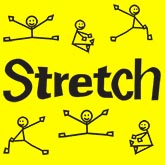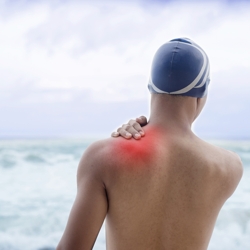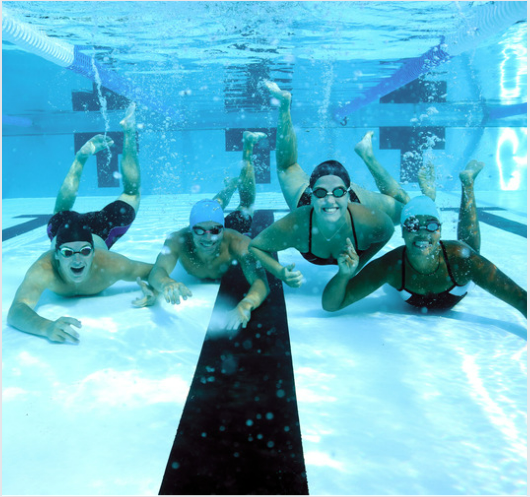Swimming Stretches

Swim Tips, Swim Technique, Training, Swimming Injuries
|
February 2, 2014
Why is stretching important for Swimmers?
Newcomers to the sport of swimming and lap swimming may think that athletic success is entirely dependent on speed and strength - but performance and wellness cannot be achieved without proper flexibility. Read on to find out how these basic stretches add huge benefits to your Freestyle stroke.Stretching Maximizes Swimming Performance
A swimmer's full athletic potential cannot be reached without training flexibility through stretching. Without stretching, swimmers are unable to make the most of their strength and technique, causing them to sacrifice bio-mechanical efficiency, negatively impacting both speed and endurance.Stretching Helps Prevent Swimmer Injury
Swimmers that lack flexibility are more prone to injury. Because swimming is a full body exercise that demands extraordinary range of motion, flexible joints and elastic muscles reduce physical stressors and recover more effectively.3 Basic Swimming Stretches For Freestyle
Improving Kick With Ankle Stretches
Developing an effective kick requires strength and ankle flexibility. At its worst, a foot held at a ninety degree angle to the leg cannot produce efficient kicking force. Ideally, toes and feet must be pointed to be completely in line with the legs, allowing the greatest active surface area to maximize propulsion. Inflexible ankles prevent swimmers from pointing their toes in line with their legs during a kick and reduce propulsion efficiency.How To Stretch Your Ankles
Using a comfortable exercise mat,- Drop to your knees and sit on the backs of your heels.
- Use your weight to drive your toes and feet into straight alignment with your legs, striving to remove any space between the mat and front part of your ankle (below your shin and above your foot).
- Reps: do this twice, for 45 - 60 seconds each time.
- When can you do this stretch? Any time, always before swimming.
Improving Rotation With Hip Stretches
Good hip flexibility allows for proper hip & body rotation during swimming, causing your body and stroke to open up and elongate to maximum length, allowing the longest possible reach for a long, powerful stroke. Without proper hip flexibility, swimmers will have a poor rotation during freestyle, thereby encouraging 3 technique problems to arise:- The head reaches too far while taking a breath, reducing speed and disrupting the natural stroke rhythm.
- The stroke will shorten and lose efficiency and power.
- The back will arch, causing the body to sink and encounter more water resistance in a less hydrodynamic position.
Hare are two basic hip stretches that increase the range of athletic motion in hips:
Hip Circle Stretches
Standing in front of a mirror,- Place feet at shoulder's width apart, with hands on hips.
- Move your hips in continuous hula hoop style circles without dropping your hips.
- The Goal: Strive to achieve a smooth and continuous smoother, fuller circles each you perform the movement.
- Reps: do this twice (one clockwise, one counter clockwise), for 90 seconds each.
- When can you do this stretch? Every day.
Lateral Hip Stretches
Standing in front of a mirror,- Place feet a shoulder's width apart, with hands on hips.
- Keeping your hips tucked underneath your torso, move your hips side to side without arching your back.
- Keep your hips straight across the front of your body, aligned straight with your feet, being careful not to push your hips forward or backward.
- The Goal: Strive to achieve smooth and continuous lateral hip movements, without losing proper hip alignment.
- Reps: do this one for 90 seconds.
- When can you do this stretch? Every day!
Hang Loose Swimmers!
Add these stretches to your regimen - they may seem basic, but they can do a world of good for your freestyle stroke. Please let me know if you have any questions. See you at the pool! RobinLearn More About Aquatic Fitness:
- Guide to Dryland Swimming Workouts and Products
- Swimming vs. Running: Which is a Better Form of Exercise
- Upper Body Water Workouts with Kiefer Dumbbells
- Basic Gear For Fitness Swimming
- Basic Gear For Fitness Swimming Part 2
- Swim Fitness During Pregnancy
- Essential Swim Gear for Water Aerobics and Aqua Therapy








Leave a Comment
Your email address will not be published. Required fields are marked *